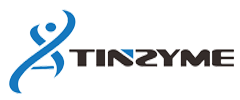
T7 RNA Polymerase, GMP Grade
2024-07-29
293Transfer
2024-10-18TRANS1000 transfection reagent
Product Number: TR1000
Shipping and Storage
This product is transported at room temperature and stored for a long time at 4℃, with a validity period of 12 months.
This product is safe to use and no biological or chemical toxicity has been found. If accidentally contaminated, rinse with clean water.
Description
TRANS1000 transfer reagent is a nano polymer transfection reagent developed and synthesized by our company. This reagent is synthesized using nanotechnology and is a new generation of non viral transfection reagents. Due to the application of nanotechnology, the TRANS1000 transfer agent exhibits excellent low toxicity and high efficiency performance during cell transfection.
This product is recommended for transfecting small fragments of nucleic acid (RNA or DNA below 1kb) such as siRNA, microRNA (miRNA), mimic, inhibitor, etc. into animal cells (including various cell lines, primary cells, suspension cells, insect cells, etc.).
This product has demonstrated good RNA transfection efficiency in various cell lines and low cytotoxicity, with lower cytotoxicity being particularly important for RNAi experiments.
Note
- Due to the low cytotoxicity of this product, the number of cells transfected with this product is relatively small, which helps to improve transfection efficiency.
- Using this product for transfection and measuring by mass (μg), for 21nt double stranded siRNA, 1OD=3.0nmol=40μg.
- For larger nucleic acids larger than 1kb, please use our company’s TRANS2000 transfer reagent long nucleic acid transfection reagent.
- If Trizol is needed to extract RNA after transfection, please change the solution 6 hours after transfection.
Related reagents
- TR2000: Transfect long nucleic acids into animal cells.
- TR1812, TR1811: Animal in vivo transfection of RNA and DNA.
- TR3091: Virus infection enhancement series reagents can enhance the infection efficiency of lentiviruses, adenoviruses, adeno-associated viruses, and retroviruses.
